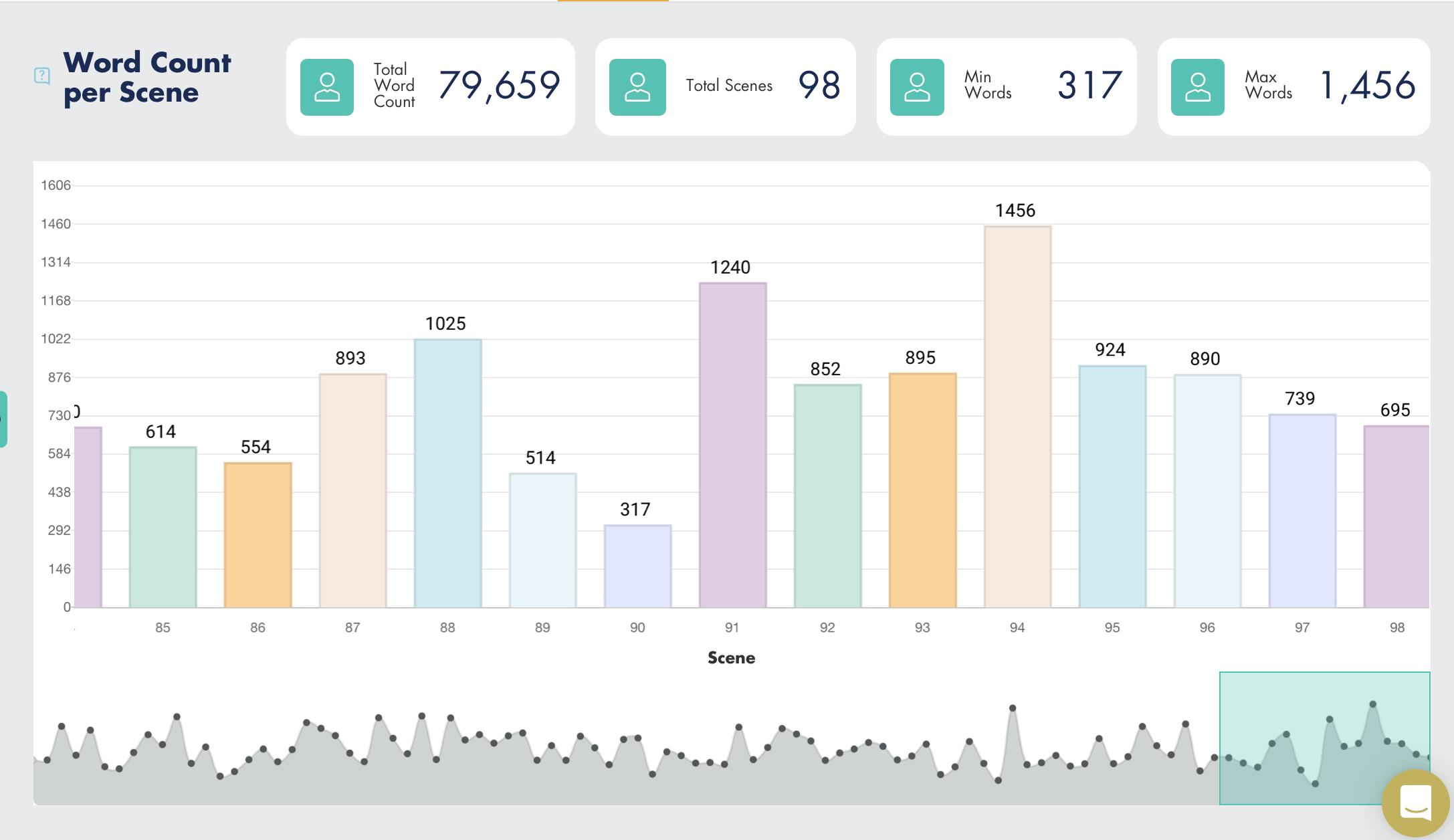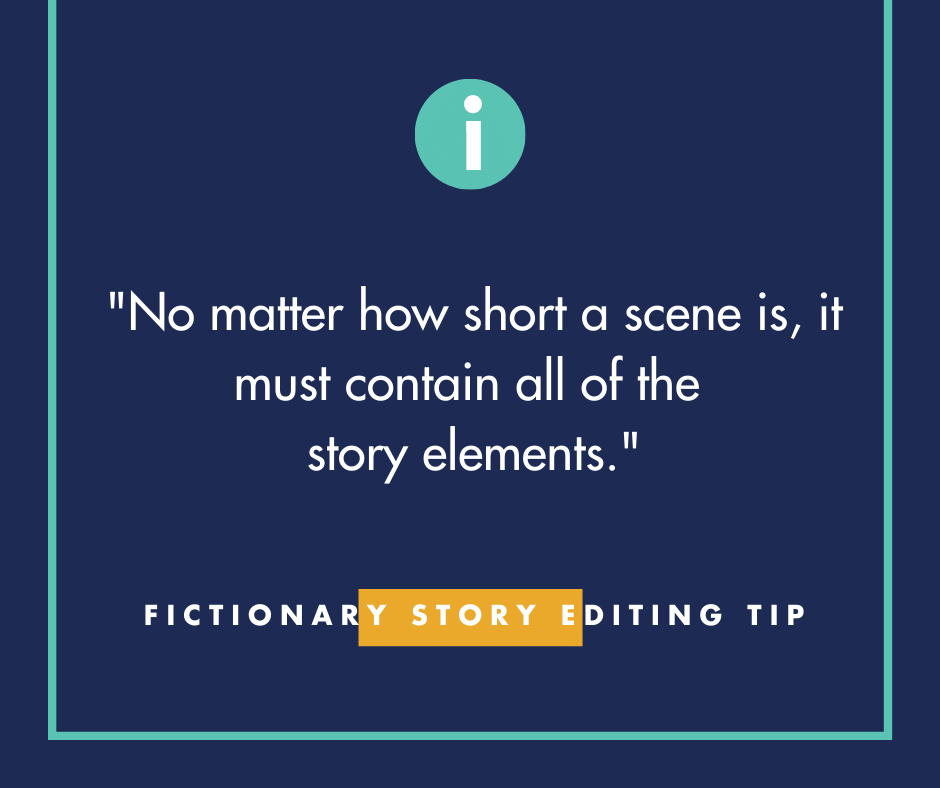
When you’re about to begin a story edit, you may wonder if word count per scene is important. You can stop wondering. We’re going to show you why it can make the difference between a good story and a powerful story.
Pacing might be one of the last things an author thinks of, but it should be one of the first things you evaluate after a draft is complete. You also need to think about patterns in your story and what you’re trying to emphasize. We’ll take a look at all three.
What Is Pacing in Literature?
Pacing is the speed at which a story happens and its flow. Pacing can refer to everything from characters, to backstory, to flashbacks, to action, to setting.
If a story is too slow, the reader will potentially become bored and stop reading. If a story is too quick, then the story will lack depth and the reader may become detached from the action.
Using Scenes to Determine Narrative Pacing
Every scene is used as a building block to create a powerful story. The length of a scene affects the pacing of the story. The shorter the scene, the faster the pacing. The longer the scene, the slower the pacing. This, of course, has exceptions, but you can use it a a guideline and a place evaluate fixing pacing issues.
Too many long scenes in a row can make a story dull.

Too many short scenes in a row might make the story seem episodic.
Pacing that’s spot on will captivate the reader.
The first important scenes to look at are the key scenes in your novel such as the inciting incident, plot point 1, midpoint, plot point 2, and climax. These can have a longer word count and still be fast-paced. The action or key events happening in these scenes with drive the pacing.
When a reader finishes a scene, they feel a sense of accomplishment. If a scene is too long, they might get tired and stop reading and not feel accomplished.
What Does an Author Use to Control the Pacing of a Story?
Knowing the word count per scene helps evaluate the pacing in the story. Sometimes the story needs to slow down, using the time to build tension and suspense. Sometimes quick action is needed to drive the story forward.
As an editor, I sometimes see random scene lengths, instead of scene lengths used to control pacing. Working on scene word count is an often underutilized method to improve a story. Here are a few issues to think about.
- Unbalanced word count
- Low word count in key scenes
- High word count after climax
You can slow a scene down by focusing on a subplot or adding more descriptive detail. This has the side effect of lengthening the scene. You can also give your character time to contemplate a high-action scene and what affect it had on them.
You can speed a scene up by using shorter sentences, reducing descriptive detail, and cutting information dumps.
An excellent book on increasing or decreasing descriptive detail is The Anatomy of Prose by Sacha Black.
The writer below writes in short scenes and you can see they are picking up the pace at the end of the story by shortening scenes starting in scene 95.

Pro Tip: When you’re reading the Word Count per Scene insight in StoryTeller, you can click on any bar and see the text for that scene. This insight is drawn within seconds of importing your manuscript into StoryTeller, so right away you can evaluate the word count per scene and “see” where the story structure needs work.
Let me just say this amazing thing again. You don’t have to create a graph of your word count per scene manually. StoryTeller does it for you.
What Can an Author Use to Speed up the Pacing of a Story?
Some authors like to write scenes of the same length for an entire novel. Others vary the scene word count. The choice is up to you, and you can use it to your advantage if you evaluate the per scene word count from a big-picture view.
If you follow a pattern (same word count per scene) throughout your story and one scene is way longer than the rest of the other scenes, make sure this is the climax scene. If it’s not, there are probably too many words in the scene.
Using Pacing in Writing for Emphasis
The Word Count per Scenes insight in StoryTeller gives you the ability to see what scenes are emphasized by giving it a longer word count, and where the client has de-emphasized a scene by giving it a shorter word count.
Without knowing the specific word count, you don’t have a method to know if a critical scene is too short or a minor scene is too long.
Scene 94 in the example above is the first scene in the climax and is given the highest word count. This is writer has done a great job using word count to pace ending of the story.
The Story Arc and Word Count
To deepen your knowledge check out The Perfect Story Arc. This will show you what a commercially successful book looks like will point you to more resources.
Pacing in a Story Conclusion
Pacing is one of the key elements of reader engagement, but it can be difficult to judge as a writer.
So one of the best ways to assess your pacing is to read your story aloud or to turn to beta readers. They can view your story with a fresh pair of eyes and help highlight where your pacing may be too fast or too slow.
If you want to find beta readers, the Fictionary community is a great place to start. It is free to join and a wonderful place to find like-minded writers.


